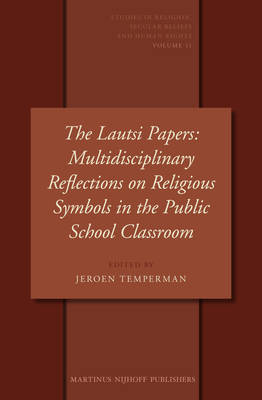
- Afhalen na 1 uur in een winkel met voorraad
- Gratis thuislevering in België vanaf € 30
- Ruim aanbod met 7 miljoen producten
- Afhalen na 1 uur in een winkel met voorraad
- Gratis thuislevering in België vanaf € 30
- Ruim aanbod met 7 miljoen producten
Zoeken
The Lautsi Papers: Multidisciplinary Reflections on Religious Symbols in the Public School Classroom
€ 337,45
+ 674 punten
Omschrijving
Increasingly, debates about religious symbols in the public space are reformulated as human rights questions and put before national and international judges. Particularly in the area of education, legitimate interests are manifold and often collide. Children's educational and religious rights, parental liberties vis-à-vis their children, religious traditions, state obligations in the area of public school education, the state neutrality principle, and the professional rights and duties of teachers are all principles that may warrant priority attention. Each from their own discipline and perspective--ranging from legal (human rights) scholars, (legal) philosophers, political scientists, comparative law scholars, and country-specific legal experts--these experts contribute to the question of whether in the present-day pluralist state there is room for state symbolism (e.g. crucifixes in classroom) or personal religious signs (e.g. cross necklaces or kirpans) or attire (e.g. kippahs or headscarves) in the public school classroom.
Specificaties
Betrokkenen
- Uitgeverij:
Inhoud
- Aantal bladzijden:
- 472
- Taal:
- Engels
- Reeks:
- Reeksnummer:
- nr. 11
Eigenschappen
- Productcode (EAN):
- 9789004222502
- Verschijningsdatum:
- 6/09/2012
- Uitvoering:
- Hardcover
- Formaat:
- Genaaid
- Afmetingen:
- 160 mm x 236 mm
- Gewicht:
- 839 g

Alleen bij Standaard Boekhandel
+ 674 punten op je klantenkaart van Standaard Boekhandel
Beoordelingen
We publiceren alleen reviews die voldoen aan de voorwaarden voor reviews. Bekijk onze voorwaarden voor reviews.







